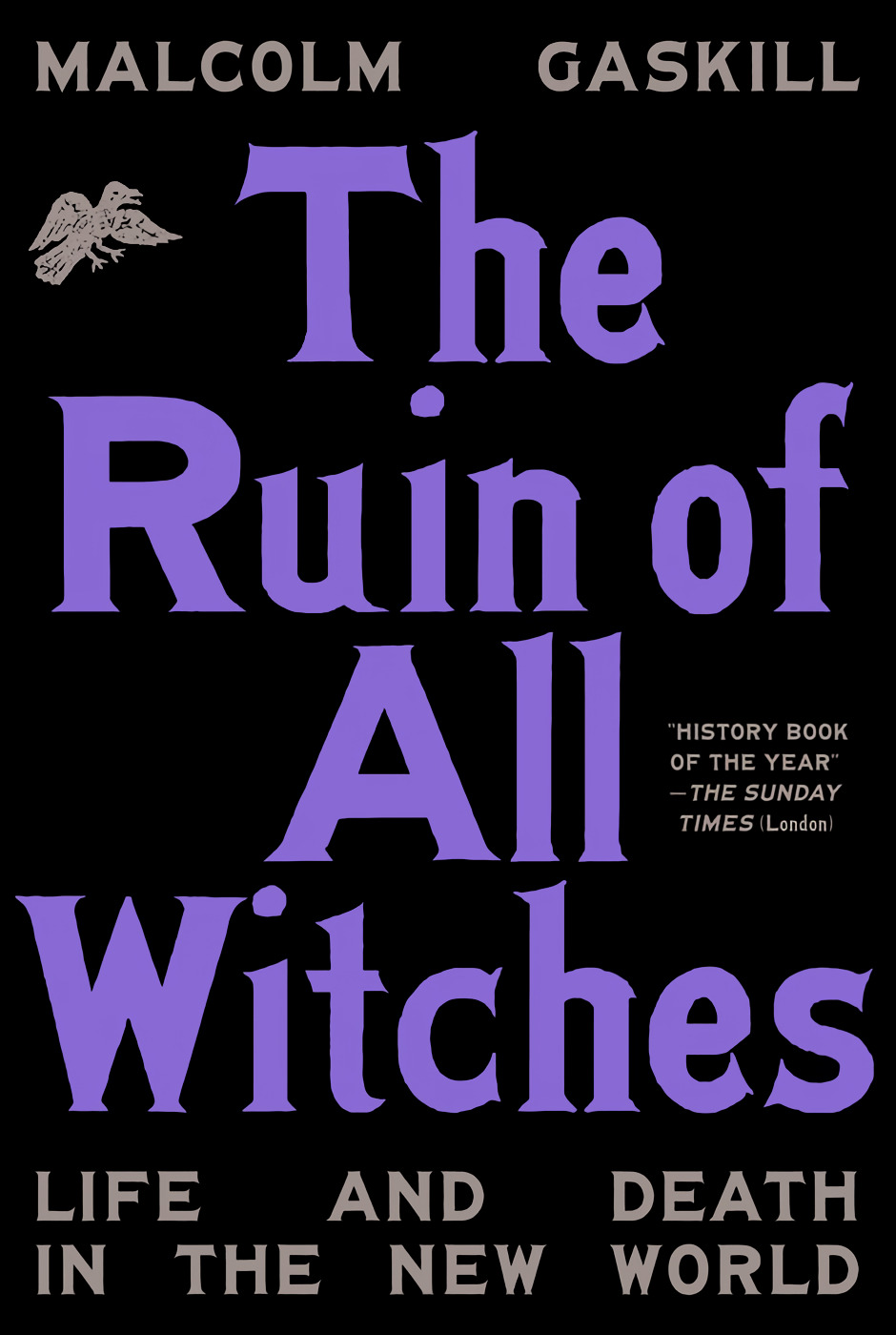Gaskill’s The Ruin of All Witches: Life and Death in the New World tells the story of Hugh and Mary Parsons, and how they came to be accused of witchcraft in Springfield in June of 1651. Gaskill chronicles in lucid detail the events of the years leading up to the Parsons’ trials, when the tensions of this small town intensified until they ultimately took shape in this form. The event that took place in Salem in 1692 was by no means the only witch trial New England saw during this century. In addition to the Parsons’ story, there was Margaret Jones, a midwife who’d been hanged in Boston Common for witchcraft on June 15, 1648, and the three people hanged in Hartford, Connecticut, in 1663—Rebecca Greensmith, her husband, Nathaniel, and a third, Mary Barnes.
These were tragic miscarriages of justice, of course, and the idea that they happened because towns used accusations of witchery to deal with marginalized women who had more or less power than they should is now familiar. But Gaskill’s story about Springfield is a bit different: For one, of course, Hugh Parsons was a man. More importantly, Gaskill argues that for Colonial New England, witchcraft “was not some wild superstition but a serious expression of disorder embedded in politics, religion, and law.” Ultimately, this is a story about historical change. Despite the fact that witchcraft accusations had existed for centuries in Europe, Gaskill notes that the vast majority of witchcraft persecutions on the continent and in the New World happened between the mid–16th century and the mid–17th century, a time not just of superstition but also rapid modernization, “when every aspect of political, religious, and economic existence was in turmoil throughout the Western world.” While his narrative sometimes gets swamped by the minutiae of Puritan theology and a broad cast of characters, Gaskill nonetheless tells a gripping, at times terrifying story about the legal and social function of witches, and how easy it was for women and men, once accused, to have their lives destroyed—or in some cases lose them altogether—as communities looked for ways to mediate and make sense of this turmoil.
For New England Puritans, Satan was presumed to be everywhere, always waiting. All God had to do was to withdraw his protection, and Satan’s emissary would slide into a person (usually via an imp or other familiar), seizing on human weakness and vanity. But Satan rarely acted alone. Far more likely he would work through intermediaries: witches. Ordinary men and women who’d strayed and made covenants with the devil became his minions on Earth, and the chief cause of misfortune in day-to-day New England.
